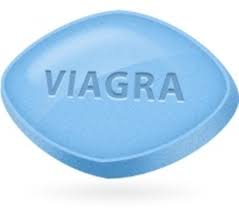
Understanding the Benefits and Use of Tretinoin Gel
Tretinoin Gel is a powerful topical medication widely used in dermatology. Known for its effectiveness in treating acne and signs of aging, this gel contains tretinoin, a derivative of vitamin A. It promotes skin cell turnover, prevents pore clogging, and enhances the overall skin texture. For those interested in purchasing this gel, check out Tretinoin Gel tretinoin krema apoteka for convenience and accessibility.
What Is Tretinoin Gel?
Tretinoin, also known as all-trans retinoic acid, is a compound that belongs to the retinoid family. It is primarily used to treat acne as well as aging signs such as wrinkles and hyperpigmentation. Tretinoin works by increasing cell turnover, facilitating the shedding of old skin cells and promoting the growth of new ones. As a result, it helps to unclog pores, reducing the occurrence of acne and leading to a smoother complexion.
How Does Tretinoin Gel Work?
The mechanism of action of tretinoin is multifaceted. When applied topically, it penetrates the skin and interacts with specific receptors within skin cells. This action stimulates collagen production, increases the rate of cell division, and decreases the formation of comedones (blackheads and whiteheads). Furthermore, it helps improve skin elasticity and reduces the appearance of fine lines and wrinkles.
Benefits of Using Tretinoin Gel
1. Acne Treatment
One of the most common uses of Tretinoin Gel is for the treatment of acne. By preventing pores from becoming clogged and reducing inflammation, it effectively allows for clearer skin over time.
2. Anti-Aging Properties
Tretinoin is known for its anti-aging benefits. It helps to diminish the appearance of fine lines and wrinkles by enhancing the production of collagen, which is vital for maintaining skin’s firmness and elasticity.
3. Prevention of Hyperpigmentation
This gel can also aid in reducing hyperpigmentation and dark spots caused by sun damage or post-inflammatory changes from acne, leading to a more even skin tone.
How to Use Tretinoin Gel
When using Tretinoin Gel, it’s critical to start slowly to allow your skin to acclimate to the medication. Here are some guidelines to follow:
1. Start with a Lower Concentration

If you’re new to retinoids, it’s advisable to start with a lower concentration of tretinoin and gradually increase it as your skin builds tolerance.
2. Application
Apply a small amount of Tretinoin Gel to clean, dry skin at night. Avoid sensitive areas such as the eyes and mouth, as these areas can be more susceptible to irritation.
3. Use Sunscreen
Tretinoin can make your skin more sensitive to the sun, so using a broad-spectrum sunscreen during the day is crucial to protect your skin from UV damage.
Possible Side Effects
While Tretinoin Gel is generally well-tolerated, it can cause some side effects, especially in the early stages of use. Common side effects include:
1. Skin Irritation
Redness, itching, and peeling are common, particularly when first starting treatment. If symptoms persist or worsen, consulting a dermatologist is advisable.
2. Dryness
Dryness is another frequent complaint among users. It is essential to use a gentle moisturizer to mitigate this effect.
3. Photosensitivity
As mentioned, tretinoin can increase skin sensitivity to sunlight, necessitating the use of sunscreen when exposed to sunlight.
Consultation with a Dermatologist
Before starting any new skincare treatment, it’s essential to consult with a dermatologist. They can assess your skin type and condition, determining whether Tretinoin Gel is suitable for you and advising on the right concentration to begin with.
Conclusion
Tretinoin Gel offers numerous benefits for individuals dealing with acne and signs of aging. Its ability to promote skin renewal makes it a staple in dermatological treatments. By following proper usage guidelines and consulting with skincare professionals, many can achieve improved skin texture and appearance. Remember to be patient, as noticeable results may take several weeks to become evident.






